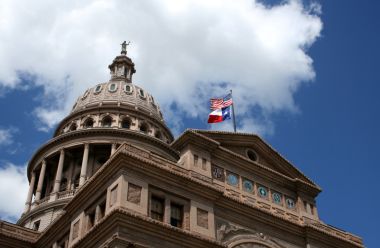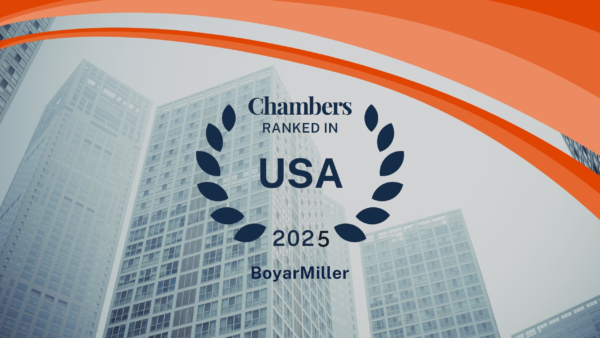With a deep understanding of your business alongside clear and honest communication, we help clients face challenges fearlessly.
Contact us today to learn more about our services and how we can help drive solutions.
How Much Can My Business Borrow Under the Paycheck Protection Program?
April 1, 2020
Now including updated information following the issuance of the Interim Final Rule.
Congress made the largest allocation of funds—some $349 billion—towards the new Paycheck Protection Program (PPP). Under the PPP, eligible small businesses would be able to receive loans up to a maximum amount of $10,000,000 to cover certain costs for small businesses, such as payroll costs, rent and utility payments. These loans would be fully guaranteed by the Small Business Administration. Two important questions have arisen with regard to the PPP: How much can my small business borrow under the PPP program and what is included as “payroll costs”?
How much can my small business borrow under the PPP?
The CARES Act sets forth a formula for calculating the maximum amount that can be borrowed by an eligible borrower. The maximum amount that any borrower may receive is defined as the lesser of:
- $10,000,000; or
- The sum of:
- 2.5 times the average monthly payroll costs (as defined below) incurred during the 1-year period before the loan is made; and
- The amount of any outstanding Small Business Administration (SBA) disaster loan made between January 31, 2020 and the date on which such disaster loan may be refinanced under the CARES Act.
For example, if Company A’s average monthly payroll costs during the 1-year period prior to the date of the loan is $500,000, and Company A was granted an economic injury disaster loan in the amount of $1,000,000 on March 1, 2020, then the maximum loan amount for Company A would be $2,250,000 ([$500,000 x 2.5] + $1,000,000).
To calculate average total monthly payments for payroll costs, seasonal employers will have the choice to calculate this amount looking at either (i) the 12-week period beginning February 15, 2019, or (ii) the period from March 1, 2019, to June 30, 2019. Additionally, businesses not operating during the period beginning February 15, 2019, and ending June 30, 2019, will calculate the average total monthly payments for payroll costs incurred during the period beginning January 1, 2020, and ending February 29, 2020.
What is included as payroll costs?
Under the CARES Act, “payroll costs” for employees include payments for:
- Salaries, wages, and commissions;
- Cash tips or their equivalent;
- Vacation, parental, family, medical, or sick leave;
- Allowance for dismissal or separation;
- Group healthcare benefits, including insurance premiums;
- Retirement benefits; and
- State or local taxes assessed on employee compensation.
It is important to note that payroll costs for employees specifically do not include “compensation of an individual employee in excess of an annual salary of $100,000…”, as prorated for the applicable period. We interpret this limitation as a cap and not an exclusion. So, the payroll of an employee with an annual salary in excess of $100,000 can be included but not in excess of that amount, as prorated. What we are unsure about, and hope to receive guidance from the SBA on, is whether compensation, as used to reach the $100,000 cap, refers only to salary or wages, or is inclusive of all other payroll costs of that employee, such as paying for health care premiums or retirement benefits, for example.
Under the CARES Act, “payroll costs” for sole proprietors and independent contractors, include payments for:
- wages and commissions;
- income;
- net earnings from self-employment; and
- similar compensation.
Similar to the limitation as to payroll costs for employees, payroll costs for sole proprietors and independent contractors are likewise capped at $100,000 in 1 year, again as prorated for the applicable period.
Additionally, the CARES Act states that the following are not included in the definition of “payroll costs”:
- Taxes withheld or imposed under the Federal Insurance Contributions Act (FICA), the Railroad Retirement Tax Act, and the Collection of Income Tax at Course on Wages;
- Compensation for employees living outside of the United States; and
- Qualified Sick and Family Leave Wages for which a tax credit is allowed.
The CARES Act does not specifically mandate that the SBA give any guidance as to the calculation of the maximum loan amount or with regard to the definition of payroll costs, but we are hopeful to receive some guidance on both. We expect that regulations and guidance will be issued by the SBA on Friday, April 3, 2020.
UPDATES AND CLARIFICATIONS based on the Interim Final Rule issued by the SBA:
How much can my small business borrow under the PPP?
- The Interim Final Rules indicates that the average monthly payroll costs will be calculated by aggregating “payroll costs from the last twelve months…” Confusion, however, still remains because the Interim Final Rule is not instructive on whether that is calendar months or a mid-month calculation.
- The $100,000 limit on payroll costs per employee, as prorated for the applicable time period, is a cap, not an exclusion, and will only include amounts paid for an employee’s salary.
- The Interim Final Rule clarifies that a borrower can be eligible for receipt of a PPP loan and an economic injury disaster loan (EIDL) as long as the EIDL proceeds were not used for payroll costs. If the proceeds from an EIDL loan were used for payroll costs, the PPP loan must be used to refinance the EIDL loan.
- An EIDL emergency grant of $10,000 will be applied to reduce the maximum PPP loan amount.
- For the purpose of calculating payroll costs, independent contractors do not count as employees.
What is included as payroll costs?
- The Interim Final Rule indicates that payroll costs only include compensation to employees. We are still looking for guidance from the SBA on whether amounts paid by partnerships, LLCs, and other pass-through entities in the form of guaranteed payments or distributions to employee partners/members can be included in payroll costs.
- With an application, employers that pay cash tips or the equivalent can submit employer records, and in the absence of such records, an employer can submit a reasonable, good-faith estimate.
Please visit boyarmiller.com to receive updates based on any guidance issued by the SBA related to the maximum loan amount and definition of payroll costs and to stay up-to-date with other COVID-19 news.





